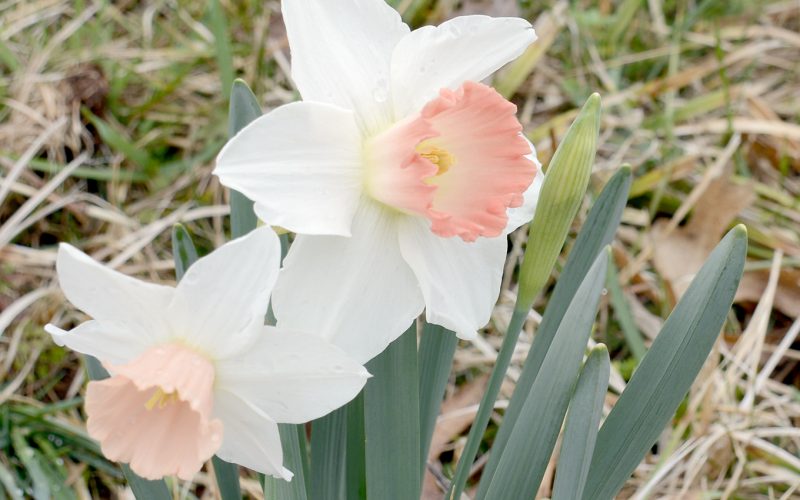
Photo by Amanda Bancroft | Daffodils are in bloom.
It’s been more than 50 years since Rachel Carson published her book Silent Spring in 1962, raising awareness about the harmful impact of DDT, a pesticide, on our ecosystems. Ten years after its publication, DDT was banned in the United States (but not for malaria prevention spraying worldwide). Now in 2016, many of Arkansas’ DDT-affected species have fully recovered!
Bald Eagles are now thriving in our state, yet there’s a setback. Hydrilla, an introduced freshwater plant native to Asia, supports a type of toxic algae that has killed eagles in Arkansas and other states by damaging the eagles’ brains. It’s not the first time exotic invasive plants have killed something beloved, yet Americans struggle to apply patriotism to native plants, preferring instead to plant exotics.
Despite that, nobody needs to feel badly about having invasives in their yard. When people feel guilty, they sometimes argue that facts don’t matter because exotics are attractive. Don’t get guilty! Get active. Make a long-term plan to eradicate invasive exotics from your landscape if it can’t be done right away. These plants are beautiful, true. But I’ve never stopped doing the right thing because the bad thing to do was just so darn pretty.
It’s often backbreaking work, yet the army against invasive exotics is growing, and there are many helping hands in Northwest Arkansas. Pretty soon you may be the only person around who isn’t involved in some way or another. The Arkansas Natural Heritage Commission and municipal parks and recreation departments frequently host volunteer events to remove unwanted plants. Greedy Goats has applied their ravenous hoofed friends to the cause. Northwest Arkansas Land Trust has invasive removal days on Mt. Kessler and at Wilson Springs Wetland Prairie.
The City of Fayetteville now has an ordinance banning 18 species of invasive plants:
1. Asian Wisteria (Wisteria sinensis, Wisteria floribunda)
2. Bamboo (Phyllostachys spp.)
3. Bigleaf Periwinkle (Vinca major)
4. Callery/Bradford Pear (Pyrus calleryana)
5. Burning Bush (Euonymus alatus)
6. Bush Honeysuckle (Lonicera maackii, Lonicera fragrantissima)
7. Chinese Privet (Ligustrum sinense)
8. Creeping Euonymus (Euonymus fortunei)
9. English Ivy (Hedera helix)
10. Heavenly Bamboo (Nandina domestica)
11. Japanese Honeysuckle (Lonicera japonica)
12. Kudzu (Pueraria montana var. lobata)
13. Littleleaf Periwinkle (Vinca minor)
14. Mimosa, Silktree (Albizia julibrissin)
15. Multiflora Rose (Rosa multiflora)
16. Sericea Lespedeza (Lespedeza cuneata)
17. Shrubby Lespedeza (Lespedeza bicolor)
18. Tree-of-Heaven (Ailanthus altissima)
Future seasons of our spring symphony depend on humans as compassionate composers of nature because we interrupted the performance a long time ago and changed the score. We risk letting our old compositions play through to the end when Arkansas looks quite different from the way nature intended. By removing as many exotics as possible, eliminating harmful toxins, and encouraging a healthy humanity alongside vibrant ecosystems, we will continue the legacy of Rachel Carson’s work and stop the silent spring from becoming the only music we know.
Amanda Bancroft is a writer, artist, and naturalist building an off-grid earthbag cottage for land conservation on Mt. Kessler. She and her husband Ryan blog about their adventures and offer a solar-hosted online educational center on how to make a difference with everyday choices at: www.RipplesBlog.org.










